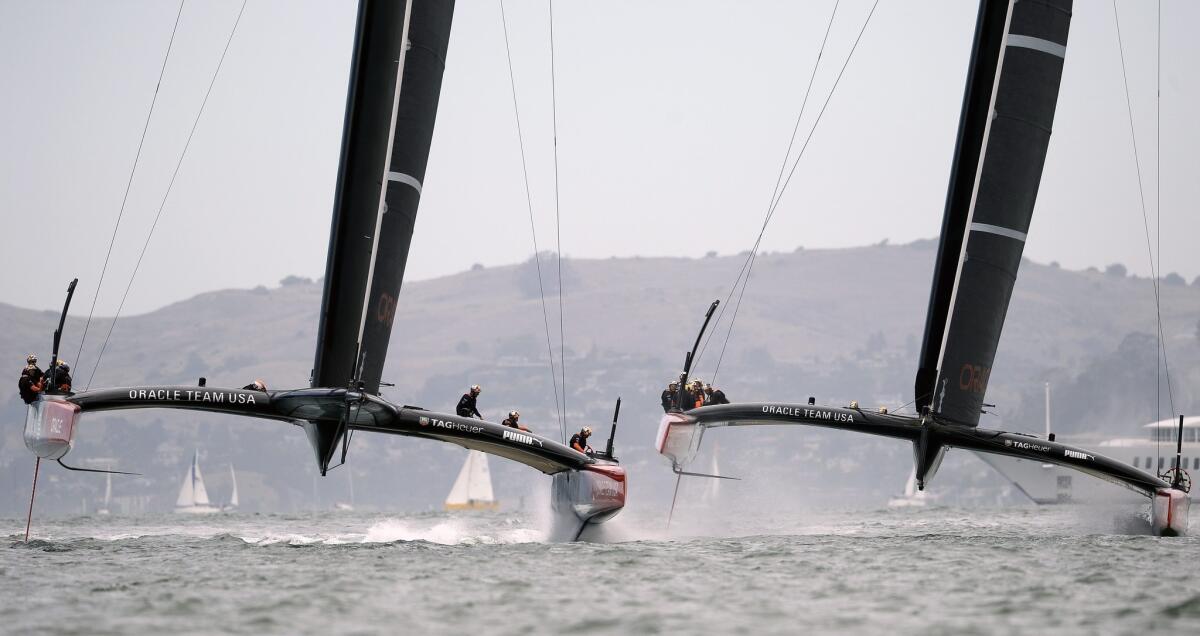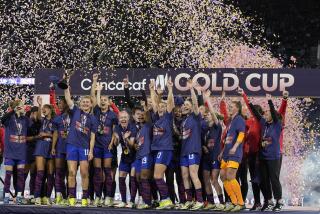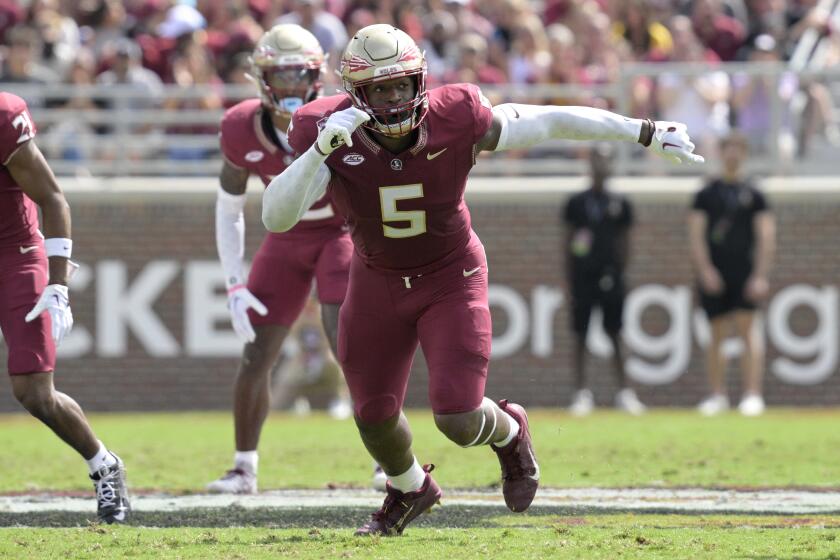America’s Cup boats use innovative design built for speed and power

The two catamarans zipping across San Francisco Bay in the America’s Cup finals each weighs about 163 tons less than America, the winning yacht in 1851 and namesake for sports’ oldest active trophy. The lighter load obviously helps these boats achieve speeds up to 50 mph, but there’s much more to their design; both are engineering marvels that maximize the energy provided by wind and water.
The AC72 (America’s Cup, 72 feet long) catamarans are defending America’s Cup champion Oracle Team USA, owned by billionaire Larry Ellison, and challenger Emirates Team New Zealand.
The Kiwis have won four of the first five races and need five more wins to claim the trophy, and Oracle Team USA needs 10 more wins (because of a penalty) to retain the Cup. Racing resumes Thursday.
Unlike the soft sails and single hull used by America and most of the boats in the event’s history, the innovative AC72s are built for speed and power.
“When you move from a conventional boat like a monohull to a multihull, there is a sudden increase in boat speed,” said Mario Camponnetto, one of five senior designers for Oracle Team USA.
The key feature in the AC72’s design is the rigid 131-foot wing sail, essentially a jumbo jetliner wing stood on its end. But there is some flexibility that allows for adjustments to the wind — the wing sail has two primary parts, a main element and a flap, connected by a hinge that can be moved to control the angle between the two. And it’s the angle at which wind encounters the sail that makes all the difference in generating maximum power.
When wind hits the sail at an angle, the sail bends the wind toward the windward side of the boat and creates a force called lift, said Oracle team designer Tom Speer. That lift pushes the boat sideways and a little forward to propel it, with the sideways force resisted by structures on the underside of the boat.
If the wind meets the sail at an angle that maximizes lift while minimizing drag (wind resistance), the boat can move against the wind and also at more than twice the wind’s speed, Speer said.
The Oracle team used several other drag-reducing modifications from its 2010 America’s Cup boat and kept them for the AC72 design.
Structural parts of the boat, such as the crossbeams connecting the two hulls and the end plates where the sails attach, were streamlined to make them as aerodynamic as possible, essentially turning everything on the boat into a wing.
The redesign was entirely based on computer models and simulations. “Instead of doing a physical model of our boat and going to a wind tunnel and blowing air and measuring forces, we replicated the same things” by using computers, Camponnetto said.
Not only could designers evaluate the resistance created by the flow of air past different parts of the boat, they could also examine vortexes created by the movement of each part, or “small tornadoes with low pressure inside that suck the boat back and create drag,” he said.
But the objects above the water tell only half the story. Two rudders and two daggerboards project below the surface (one of each on each hull) and provide stability and the rest of the lift that propels the boat as water rushes past them.
Engineers used the same computer simulations to design these appendages — the rudders have a T-shape, with the horizontal component providing stability, while the daggerboards end in an L, forming the hydrofoils that help lift the boat out of the water, allowing it to skim across the surface.
“The resistance passing through the water just falls away dramatically when you lift the hull out of the water,” said Adam Cort, executive editor at Sail Magazine, enabling the AC72s to reach their top speeds.
More to Read
Get our high school sports newsletter
Prep Rally is devoted to the SoCal high school sports experience, bringing you scores, stories and a behind-the-scenes look at what makes prep sports so popular.
You may occasionally receive promotional content from the Los Angeles Times.






